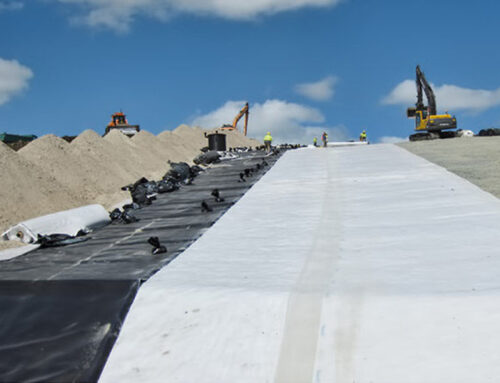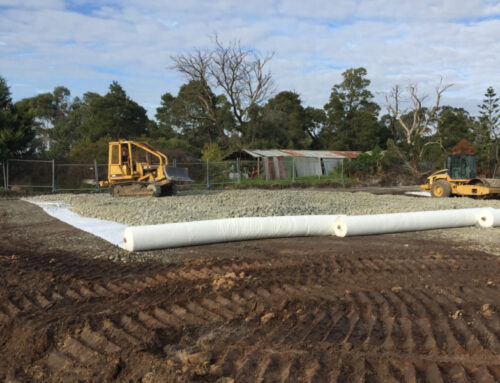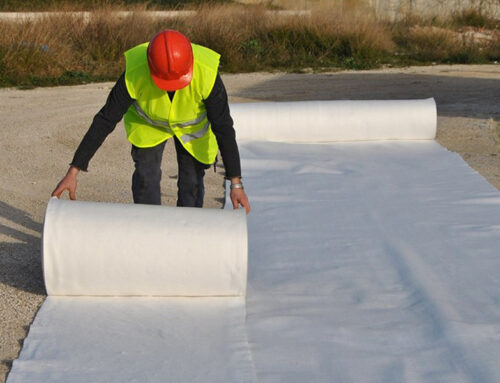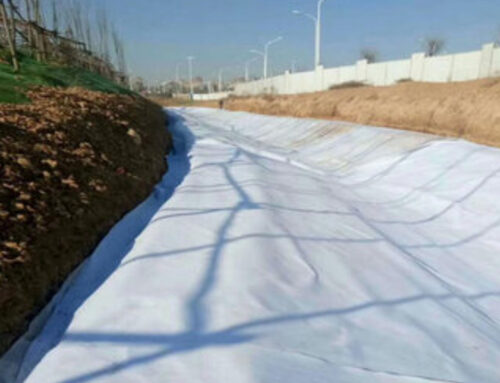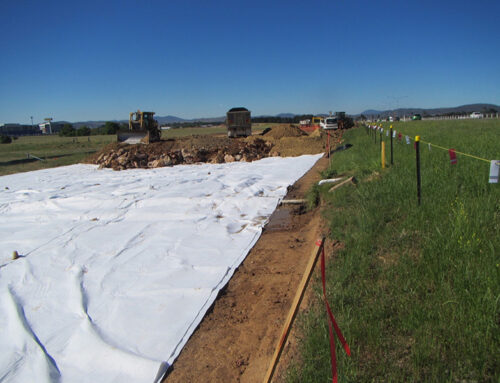Geotextiles can be divided into woven geotextiles and non woven geotextile according to the production method. Woven geotextiles are categoried into polypropylene woven fabrics and polyester woven fabrics. Non woven fabric refers to non woven geotetxile fabric. Non woven geotextile fabric is a type of synthetic geotechnical material designed for use in civil engineering applications. Unlike traditional woven geotextile fabrics, non woven fabrics are manufactured by mechanically binding fibers together, rather than weaving them. This results in a geotextile fabric with distinct properties and characteristics suitable for various construction and environmental protection purposes.
As a permeable geosynthetic material, non woven geotextiles can be divided into pp non woven fabric and pet non woven fabric. BPM Geosynthetics is the leading geotextile manufacturer and supplier with 13+ industrial experiences. We wholesale high quality geotextile products at factory price for worldwide customers. In this article, let’s discuss the similarities and differences between PP non woven fabric and PET non woven fabric. By comparing the differences between the two, we can make better selection of non woven fabric for your specific projects.
1. What is NonWoven Fabric
Non woven fabrics are versatile materials made from fibers or filaments that are mechanically together. The non woven geotextile fabric type of is determined by the method of production and the fibers used. It mainly includes pp non woven fabric and pet non woven fabric. It can be divided into polypropylene staple fiber geotextile fabric and polypropylene filament non woven geotextile fabric, polyester staple fiber geotextile non woven fabric, polyester filament non woven geotextile fabric.
2 What is PP Non Woven Fabric
PP is a thermoplastic polymer resin used widely across industries. PP non woven fabric is a type of textile material made from synthetic polymer fibers. Polypropylene is a thermoplastic material that is widely used in various industries because of its durability, strength, and low cost. it is created by bonding or felting polypropylene fibers together using heat and pressure, rather than weaving them together like traditional fabrics. This creates a material that is strong and durable, but also lightweight and breathable.
3 What is PET Non Woven Fabric
Polyethylene Terephthalate (PET) non woven fabric refers to a geotechnical material produced from polyester fiber through needle punching, spun bonding. PET nonwoven fabric is one kind of non woven geotextile. Its raw material is 100% Polyethylene Terephthalate, a type of polyester. PET is a synthetic polymer used in a variety of applications due to its durability, strength, and resistance to moisture, chemicals, and UV radiation.
According to the production process, it can be divided into PET non-woven staple fiber needle-punched geotextile and PET non-woven filament geotextile.
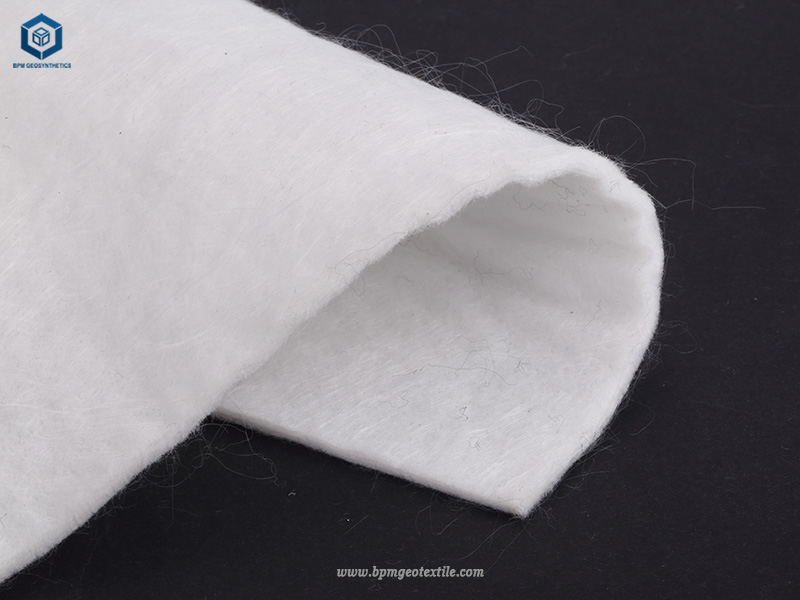
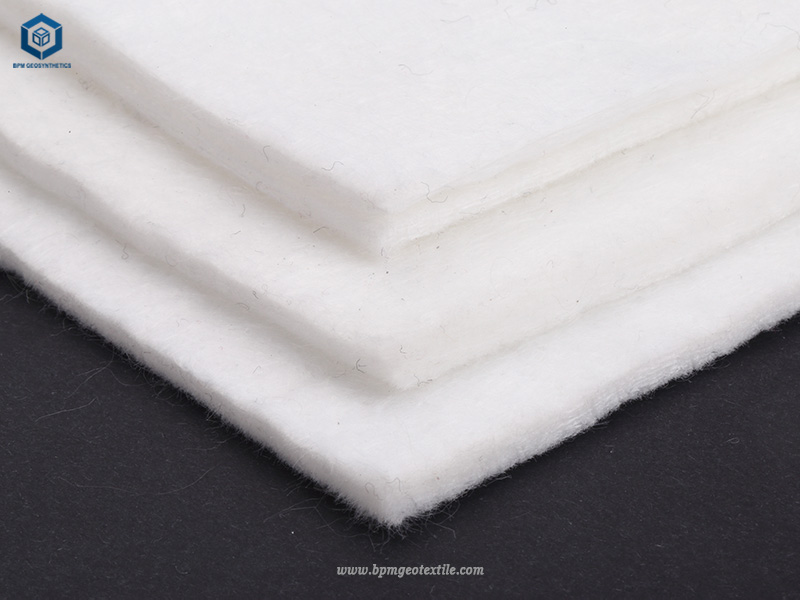
4 What Are the Similarities of PP And PET Non Woven Fabric
Both PP and PET non wovengeotextile can be manufactured into filament geotextiles and short filament geotextiles.
Both PP and PET nonwoven geotextiles are used in a wide variety of applications in the environmental and general civil markets, such as roadway construction, sports construction project, landfill separation and drainage and coast protection. But which one to choose depends on the actual situation. PP and PET Non Woven Fabric have the Following Similarities.
4.1 Isolation Functions of PP and PET Non Woven Fabric
Non-woven geotextiles are used to isolate building materials (such as soil and sand, soil and concrete, etc.) with different physical properties (particle size, distribution, consistency and density, etc.). It prevents the loss or mixing of two or more materials, maintains the overall structure and function of the materials, and enhances the load-bearing capacity of the structure.
4.2 Filter (reverse filter) Function
When water flows from the fine soil layer into the coarse soil layer, the good air permeability and water permeability of the non-woven geotextile are used to allow the water to pass through and effectively carry soil particles, fine sand, small stones, etc. to maintain the water and soil engineering of stability.
4.3 Drainage Function
Non-woven geotextile has good water conductivity. It can form drainage channels inside the soil to drain excess liquid and gas out of the soil structure.
4.4 Reinforcement Function
Non-woven geotextiles are used to enhance the tensile strength and deformation resistance of the soil and enhance the stability of the building structure to improve the quality of the soil.
4.5 Protect Against Water Flow
When scouring the soil, it effectively diffuses, transfers or decomposes the concentrated stress to prevent the soil from being damaged by external forces and protect the soil.
4.6 Anti-puncture Function
Combined with the geomembrane to form a composite waterproof and anti-seepage material, it can prevent puncture.
5 What is the Differrence of PP And PET Non Woven Fabric
5.1 Comparison of Mechanical properties
The density of PP Non Woven Geotextile is small, only 66% of polyester fiber. After multiple drafts, fine denier fibers with tight structure and superior performance can be obtained. Coupled with the reinforcement process, the strength can be even more superior.
PET Non Woven Geotextile has good physical and mechanical properties, high modulus and excellent creep properties; Mature production technology and high market share; Fibers will melt and self-extinguish when burned
But It has poor hydrophobicity and tends to accumulate condensation water when used as insulation material.
Polypropylene fiber has good monofilament strength and good hot-melt adhesion, and because of its low specific gravity, polypropylene has 45% more fibers than polyester with the same weight, so the strength advantage of polypropylene geotextiles is very obvious .
When the weight is the same, the mechanical properties of PP geotextile are better than those of PET geotextile, especially the elongation rate is much better than that of PET geotextile.
5.2 UV resistance and Weathering performance
PP non woven geotextile fabric has poor light resistance and is prone to aging and decomposition in sunlight, but it can be solved by adding antioxidants, light stabilizers, copolymerization, cross-linking and other methods. The wear resistance is second only to polyamide fiber.
PET Non Woven Geotextile fabric has high melting point, high temperature resistance, and heat aging resistance.
There is basically no change in the tensile properties of PET geotextile after 15 days; the retention rate of PP geotextile with anti-aging agent is usually around 50%~60%.
PP filament geotextile with low weight and no anti-aging agent will even pulverize.
| Item | Anti Aging | Acid and Alkali Resistance | Anti UV |
|---|---|---|---|
| PP Non Woven Fabric | Good | Good | Poor |
| PET Non Woven Fabric | Poor | Poor | Good |
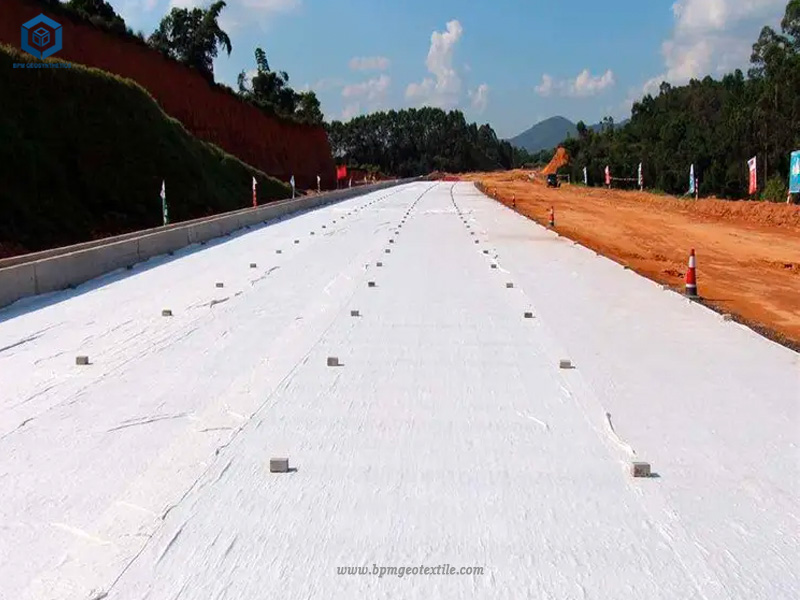
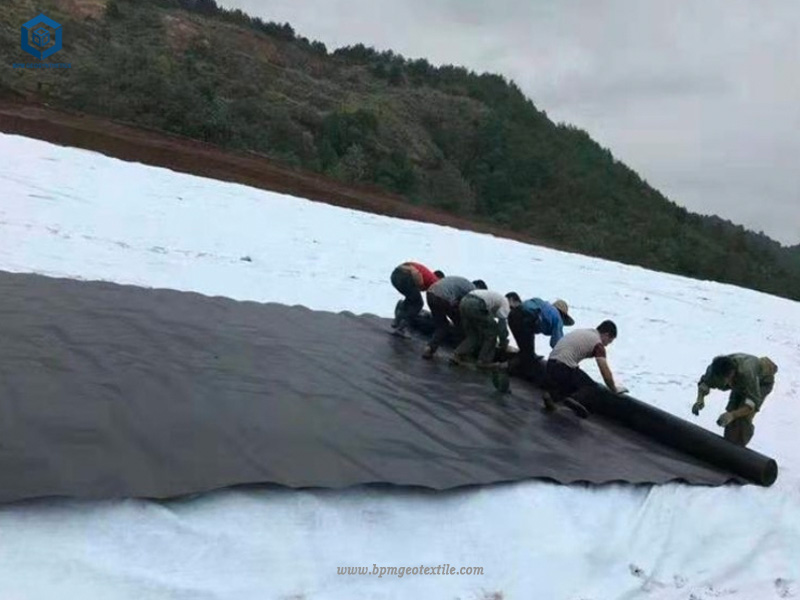
5.3 Acid Alkali Resistance And Aging Resistance
PP Non Woven Geotextile has Excellent acid and alkali resistance, mildew resistance and low temperature resistance. Not resistant to high temperatures, softening point is 130~160℃.
It has poor light resistance and is prone to aging and decomposition in sunlight. However, it can be improved by adding antioxidants, light stabilizers, copolymerization, cross-linking, etc.
PET Non Woven Geotextile Poor performance at low temperatures, easy to vitrify, and reduced strength and also Poor resistance to acids and alkalis.
Here is some experimental data:
After 500h Xenon lamp aging resistance ,the retention rate of PP geotextile with anti-aging agent can reach nearly 100%; the retention rate of PET geotextile is about 50%~70%;
Acid resistance (0.025mol/L sulfuric acid, 60℃, 3d).
PP geotextile retention rate: 90~100%; PET geotextile about 80%; Alkali resistance (2.5g/L Ca(OH)2, 60℃, 3d).
PP geotextile retention rate: 90~100%; PET geotextile about 70%.
5.4 Selection Considerations (Cost, Quality, Properties)
Among non-woven geotextiles, PP filament geotextiles have the highest performance indicators. Both tensile elongation and durability are better than other types of non-woven fabrics. But at the same time, its price is also the highest, so this type of geotextile will be required in some major projects.
The tensile strength of PET filament geotextiles is higher than that of short fiber needle punched geotextiles. At the same time, the price is relatively cheap, so the tensile strength requirements are higher, but projects with lower budgets will consider this type of geotextiles.
The index performance of PP short fiber geotextile is better than that of PET short fiber geotextile, and the price will be higher than PET short fiber geotextile.
Pet staple fiber geotextile is relatively low-priced, and those who do not have strict project requirements will consider this geotextile.
6 Summary
BPM PP non woven fabric and PET non woven fabric are similar in function and are widely used in railways, highways, sports halls, dams, hydraulic construction, tunnels, coastal beaches, reclamation, environmental protection and other projects. If the project has special Requirements need to be selected based on the characteristics of polyester geotextiles and polypropylene geotextiles.
In summary, the choice between PP and PET non-woven fabrics depends on the specific requirements of the intended application. PP is often chosen for its softness and flexibility in disposable products, while PET is selected for applications where strength and durability are critical. Additionally, environmental considerations, recycling capabilities, and regional recycling infrastructure may influence the choice between the two materials.
If you hve any questions or inquires, please contact us.
Thank you for reading.

